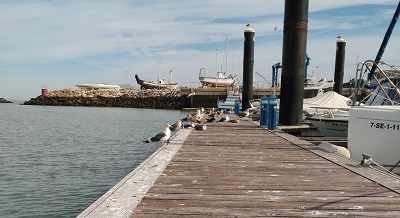
Researchers from the Doñana Biological Station assessed the spatial variation in concentrations of ten metals in faeces of the lesser black-backed gull (Larus fuscus) wintering at seven localities in South-West Spain. They found high concentrations of metals in gull faeces, with several elements (arsenic, copper, molybdenum, lead and zinc) locally exceeding (by 2 to 11 times) derived Lowest Effect Level (LEL) values.
The researchers also found strong spatial variation, related to the main pollution sources associated with the different sites. Faeces from Chipiona Port (Gulf of Cádiz) showed the highest levels of Arsenic; Cetina saltpans (Bay of Cádiz) ranked first for lead, zinc and molybdenum, which was consistent with historic mining and industrial pollution; Doñana ricefields showed the highest levels of manganese, a highly available element in flooded areas; while landfills ranked first for cadmium, cobalt, chromium, copper and nickel, potentially associated with electronic waste.
Furthermore, the scientists demonstrate how faecal analysis can be used to quantify biovectoring of metals into specific localities, using gull movement ecology and census data. At Fuente de Piedra, a shallow, closed-basin lake important for waterbirds, they show that metal inputs by lesser black-backed gulls have increased in recent years. The gulls feed in landfills and then fly to the lake to roost, and long-term deposition (e.g., of Lead) from their faeces may impact aquatic communities and ecological processes in this Ramsar site.
In short, the study provides the first data supporting the role of lesser black-backed gulls as biovectors of metals in a variety of aquatic ecosystems via their faeces. A similar approach could readily be adopted for other gull species with similar movement data.
With the numerous anthropogenic pressures facing the environment, and the increasing availability of anthropogenic food resources for gulls, the contamination burden transported by birds to natural areas is expected to increase. Incorporating movement data of frequently tracked birds, such as gulls, will allow us to increase our ability to quantify biologically mediated contaminant flux and its implications for ecosystems and human health.
From an ecosystem and health perspective, more attention should be paid to the role of gulls as vectors of pollutants in the long term, particularly in inland wetland ecosystems, which are used by millions of gulls across North America alone and where biovectoring is less studied when compared with marine and other terrestrial ecosystems.
Reference:
Martín-Vélez, V., Hortas, F., Taggart, M.A., Green, A.J., O´Hanlon N.J., Sánchez, M.I. 2021. Spatial variation and biovectoring of metals in gull faeces. Ecological Indicators. 125: 107534 DOI: 10.1016/j.ecolind.2021.107534
https://www.sciencedirect.com/science/article/pii/S1470160X21001990 


